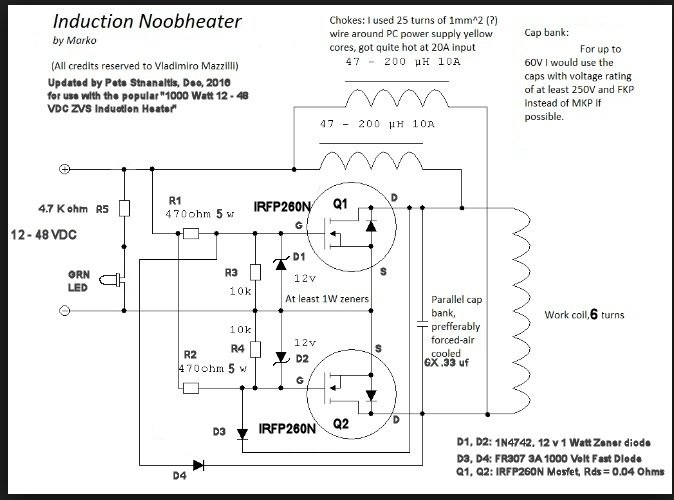I don't get into electrical discussions too often.
Frankly I think we have to disagree on this, you are introducing an element of resistance in this that does not factor in.
Putting it simply, I double the voltage, the power only goes up double, not squared. Once the power supply has hit 100%, it can't pedal any faster.
Resistance is not the varying element.
I can take a VFD, aka Inverter aka UPS and vary the output voltage all I want within the limits of the voltage I have available.
I can run a 480 volt 3 phase motor down to 100 volts with matching current, but I need the 480 if I want to run it up anywhere above 208 3 phase voltage.
I can run a 480 volt motor on 208 3 phase (seldom see 240, only in a house) but I can't run it at its full current capability. And it better be VFD rated windings.
In this case the circuit is simply starved for voltage to move the current through the board.
You could build a device that could do it on 12 volts, but it would pull 63 amps. That means a whole lot heavier duty device., larger, more expensive. That same device could trim off up to any voltage you want, but it would be an expensive device for no gain.
Far lower cost is to max the voltage and accept reduced output if you don't have that voltage (48 being chosen in this case as its a common DC output)
You can adjust Ohms Laws (more accurately the power wheel) with resistance, but that is not what we are dealing with, whatever resistance is in that power supply is fixed.
And that does not tell the real story, it may be running on IBGTs, it may be MOSFETs, It might be SCRs.
If you want the full output you need more voltage.
I can run the whole system at 208 3 phase, but then I need a step up transformer (or deal with a lot more current at the 208 level)
the only circuit that the formula actually works on is a purely resistive DC circuit.
In this case its a mess of diodes, tricacs resisters, transistors and some form of SCRs, MOSFETs, IBGTs (and capacitors).
I had a guy take an electrical class and then tell me something smelled because he tried to apply it to AC
Sorry bud, that's a whole different ball game.
Its not that you can't calculate a DC circuit with the formula, you can only do it in discreet paths, what the whole adds up to is better left to computers.
Frankly I think we have to disagree on this, you are introducing an element of resistance in this that does not factor in.
Putting it simply, I double the voltage, the power only goes up double, not squared. Once the power supply has hit 100%, it can't pedal any faster.
Resistance is not the varying element.
I can take a VFD, aka Inverter aka UPS and vary the output voltage all I want within the limits of the voltage I have available.
I can run a 480 volt 3 phase motor down to 100 volts with matching current, but I need the 480 if I want to run it up anywhere above 208 3 phase voltage.
I can run a 480 volt motor on 208 3 phase (seldom see 240, only in a house) but I can't run it at its full current capability. And it better be VFD rated windings.
In this case the circuit is simply starved for voltage to move the current through the board.
You could build a device that could do it on 12 volts, but it would pull 63 amps. That means a whole lot heavier duty device., larger, more expensive. That same device could trim off up to any voltage you want, but it would be an expensive device for no gain.
Far lower cost is to max the voltage and accept reduced output if you don't have that voltage (48 being chosen in this case as its a common DC output)
You can adjust Ohms Laws (more accurately the power wheel) with resistance, but that is not what we are dealing with, whatever resistance is in that power supply is fixed.
And that does not tell the real story, it may be running on IBGTs, it may be MOSFETs, It might be SCRs.
If you want the full output you need more voltage.
I can run the whole system at 208 3 phase, but then I need a step up transformer (or deal with a lot more current at the 208 level)
the only circuit that the formula actually works on is a purely resistive DC circuit.
In this case its a mess of diodes, tricacs resisters, transistors and some form of SCRs, MOSFETs, IBGTs (and capacitors).
I had a guy take an electrical class and then tell me something smelled because he tried to apply it to AC
Sorry bud, that's a whole different ball game.
Its not that you can't calculate a DC circuit with the formula, you can only do it in discreet paths, what the whole adds up to is better left to computers.

